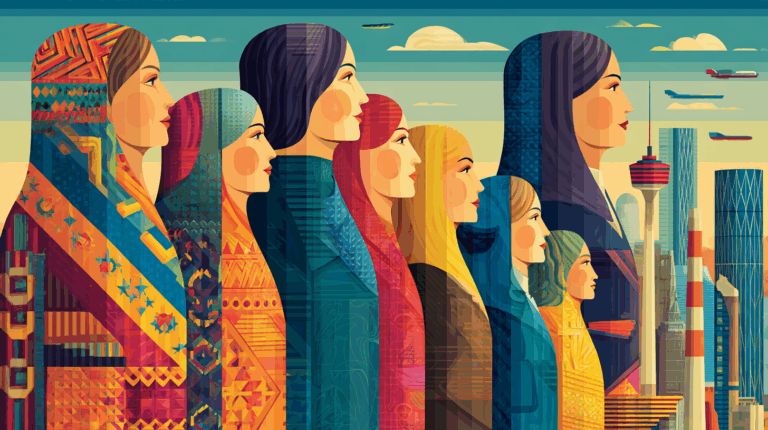SDG and inequality measurement: why the UN may be right

How can we reduce inequalities both within and among countries? An ambitious goal that the UN’s Sustainable Development Goal (SDG) 10 seeks to address. However, certain parameters are underestimated when measuring these inequalities. A methodological shift can shed light on what has been overlooked and explain the social conditions in countries like Egypt.
Income inequality is never easy to analyse. Depending on the data looked at, it can appear to be stable and moderate or, on the contrary, increasing at an alarming rate. And while the methods recommended by the United Nations (UN) for measuring income inequality in the context of the 17 Sustainable Development Goals (SDGs) often reveal the seriousness of the problem, certain parameters deserve more attention, not least the question of which scale of analysis is most relevant.
Goal 10, aimed at reducing inequalities within and among countries, certainly reflects a growing awareness of how important this issue is for economic development. But how can these inequalities be measured and monitored effectively?
Shifting the focus
Goal 10 of the SDGs focuses on narrow aspects of income distribution. It has already attracted criticism for this. Goal 10.1 aims to achieve a form of equitable growth, with progress measured by how the gains from economic growth are shared with the poorest 40% of society over time. The indicator for measuring progress on Goal 10.2, which focuses on socio-economic inclusion, is the proportion of the population living below 50% of median income.
Read also: Why do ex-French Sub-Saharan colonies fare better economically than ex-British ones?
The SDGs were set in 2015 and are to be achieved by 2030. At the halfway mark, the progress made on SDG 10 is a source of both optimism and concern. In a recent study, we stressed the importance of looking at income distribution at the regional level. This provides a more nuanced understanding of disparities and allows interventions to be better targeted. After all, this method is aligned with the UN’s recommendation to measure and monitor the SDGs at the subnational, as well as national levels.
Two very different stories
The UN’s Sustainable Development Goals Report 2023 indicates that, while many forms of inequality persist, the incomes of the poorest are increasing faster than the national average in many countries. However, the effects of the pandemic appear to be reversing this earlier trend, increasing the risk that people with relatively low incomes will be left behind.
But is this reduction in inequality evenly distributed across regions? This aspect is often underestimated. And yet, if achievements in reducing inequality are not examined from this perspective, they can be misleading.
Egypt, in particular, which we analysed over the period from 1999 to 2015, resembles a mosaic of relatively equal and very unequal regions. We compared income inequality at the national level with that at the regional level. At the national level, the various indicators suggest moderate and relatively stable inequality.
However, a very different story emerges when we compare national-level inequality measures for Egypt with regional-level figures. While inequality at the national level remained low and stable between 1999 and 2015, it generally increased at the regional level.
Growing intra-regional inequalities
The first finding is that inequality varies considerably from one region to another. According to the Gini index, Cairo has the highest level of income inequality in the country (around 0.40 in 2015). In contrast, Sharqia Governorate has one of the lowest levels of income inequality (with a Gini index between 0.21 and 0.24) over the period 1999-2015.
The second is that income inequality within regions has generally increased. We also found that the increase in income inequality tended to be greater in regions that were initially less unequal. This implies that they are approaching the level of inequality of the more unequal regions.
Third, in many regions the income share of the poorest 40% of the population has fallen and the proportion of people living below 50% of median income has increased. Reversing these trends is therefore also critical to ensuring that progress on the first two targets of SDG 10 is more evenly distributed geographically.
All this shows that it is increasingly important to look at inequality within regions. A simple breakdown of income inequality by population sub-groups based on their geographical location shows that within-region inequality accounts for the lion’s share of overall income inequality: in 2015, within-region (or intra-regional) inequality accounted for 90.8% of the total, while inter-regional inequality accounted for the remaining 9.2%. In 1999, intra-regional inequality was lower, at 79.3%.
The “Arab inequality puzzle”
Measuring and monitoring income inequality at the subnational level therefore appears to be essential. Much of people’s experience of economic inequality can in fact occur at the local level.
The rising tide of regional inequality in Egypt not only contributes to shaping political and social attitudes, but also has a profound impact on the well-being of individuals. This nuanced view, through a regional lens, sheds some light on the “Arab inequality puzzle”, i.e. the apparent contradiction between the statistically low and stable income inequality in these societies and the uprisings and protests of the Arab Spring in 2010-2011. In all likelihood, it has fuelled a sense of social injustice.
This article was republished from The Conversation under a Creative Commons license. Read the original article in French.



